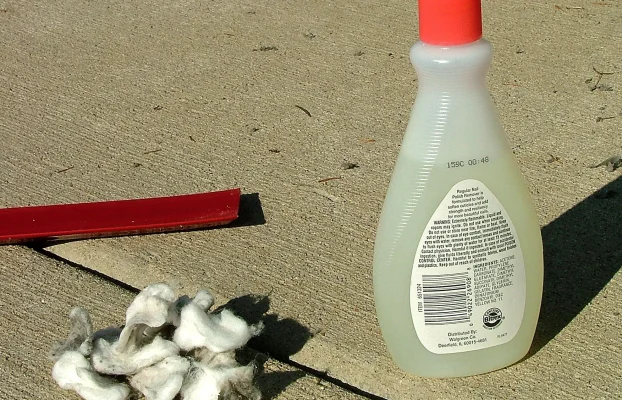How to Dispose of Old Pills: The Complete Environmental Protection Guide
According to the report of the National Library of Medicine, 6.3 billion drug prescriptions have been issued in the United States alone during 2020, which is nearly 19 prescriptions for every person. Most of all these prescriptions go completely unused. Actually, it suddenly made me feel like clearing out my medicine cabinet was not just a minor organizational project. Those aged pill bottles poorly stored in my bathroom now threaten our waters, wildlife, and soil health.
At Jiffy Junk, we’re all about giving you the best tips on junk removal. But we don’t stop there! We care deeply about the world we live in. So, in this blog, we will tell you how to dispose of old pills without harming our environment. Let’s get started:
Get a Live Quote Now
Connect to a live representative and get a quote in real time for junk removal in your area. Live Video Estimate
Table of Contents
- TL;DR
- The Hidden Ecosystem of Pharmaceutical Waste
- Pharmaceutical Disposal Methods: A Critical Assessment
- Take-Back Locations and Events
- Future-Focused Pharmaceutical Stewardship
- Medication Disposal for Special Populations
- Advanced Environmental Considerations
- How Jiffy Junk Can Help
- Learnings Recap
TL;DR
- Drugs remain biologically active substances, even at extremely low concentrations. This tells us that every environmentally conscious human should know how to safely dispose of medication.
- Flushing allows pharmaceutical waste into our waterways, damaging amphibians, food webs, and aquatic animals.
- Improper disposal of drugs in landfills seeps into groundwater aquifers over time. Earthworms and other microorganisms that inhabit the soil have the ability to take up these poisons, inadvertently passing them up the food chain to birds and other predators.
- Medication disposal methods are now available almost everywhere nationally and are very accessible. Including the DEA’s National Take-Back Day program.
- Not all drugs have the same damage to our ecosystem, so different types of drugs have peculiar risks. So basically, using the same method of disposal for all types of drugs isn’t really effective.
- Some types are more dangerous and require careful handling. For example, cytotoxic medications like chemotherapy drugs or high-potency pain relievers aren’t just old pills; they’re also powerful compounds made just to destroy cancer cells, and they can do more damage than good if mishandled.
- The DEA’s online locator tool can help you find authorized collectors near you. If you’re dropping off medications, it’s best to keep them in their original containers with your personal info blacked out, but make sure the drug names are still visible so they can be handled correctly.
- If you mix medications with something undesirable like used coffee grounds or even cat litter, then seal them into a sturdy container and throw them into the trash, it would slow the medication’s release and make it less likely to be misused to contaminate water resources or fall into the wrong hands, as well as break down the medication for almost safe disposal.
- One of the reasons for pharmaceutical pollution is that doctors prescribe too much medication. So, take actionable steps tailored to your household, medication types, and location to reduce your meds’ environmental impact and ensure safe disposal.
- At JiffyJunk, we can help you dispose of your medication properly by easily contacting us by clicking the bell in the bottom left corner to connect with a representative instantly or filling out a form for special requests, and we’ll quickly respond.
The Hidden Ecosystem of Pharmaceutical Waste
When we think of pollution, we usually think of oil leaks or plastic garbage. However, beneath the surface, there is another issue arising: pharmaceutical waste. Each time we flush medication down the toilet, or it enters the water system, its potential to leak into our ecosystem rises, creating effects we can’t always see that last for years. These leakages affect our wildlife, water quality, and our own health. To understand these impacts, researchers need to examine how medications move through and affect our environment, from aquatic ecosystems to soil environments.
Drugs remain biologically active substances, even at extremely low concentrations. Like an oil spill, a little spill of leftover pills can leave a long-lasting impact on the environment. Medical researchers have found that some of the streams, rivers, and groundwater in Patancheru, India, are really “a soup of 21 different active pharmaceutical ingredients, used in generics for treatment of hypertension, heart disease, chronic liver ailments, depression, gonorrhea, ulcers, and other ailments. Half of the drugs measured at the highest levels of pharmaceuticals ever detected in the environment,” and that was according to BLDG back in 2009, so imagine how it is now.
According to the DEA’s National Prescription Drug Take Back Day program, over 19,200,440 pounds (9,600 tonnes) of unused medications have been collected as of April 2025. This tells us that every environmentally conscious human should know how to safely dispose of medication.
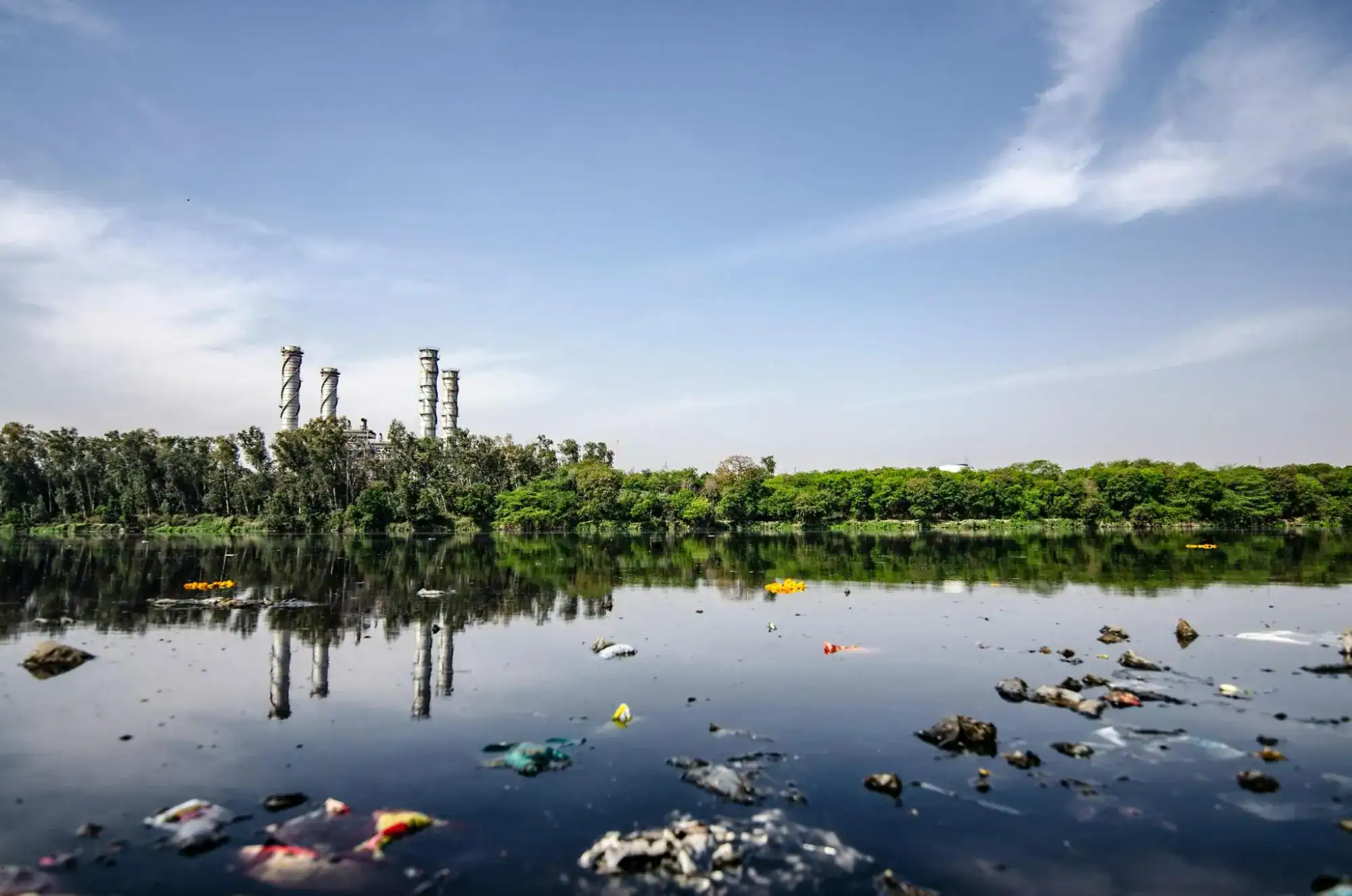
When wondering how to dispose of old pills, it’s important to think about how pharmaceuticals could harm our waterways and soil, making proper disposal key.
Source: pexels.com
The Aquatic Impact Chain
Once pharmaceuticals enter our waterways—when you dispose of them by flushing them down the toilet, for example—they pose huge risks for aquatic animals by lingering around. Even the tiniest amount can prevent growth production and the survival of fish and other animals, ultimately destroying food chains as time passes according to the researchers at Back to Blue. This effect can keep going for several years, causing the destruction of entire species and entire ecosystems, which we are only beginning to understand now.
Even at levels sufficient only to number parts per trillion, drugs are as active and dangerous as ever. Water-soluble drugs move through rivers and lakes with alarming speed, but fat-soluble drugs remain in the tissue of fish and other animals.
Bioaccumulation and Disruption in Amphibians
Bioaccumulation in Food Webs: Pharmaceuticals accumulate in fish because pharmaceuticals are designed to inhibit an enzyme in humans. Fish that possess that same enzyme may also be affected upon exposure to that chemical, according to a thesis done in the Faculty of Science University of Ontario Institute of Technology. Drugs like fluoxetine (Prozac) in fish brains disrupt instincts like predator avoidance, while small fish pass trace amounts—antidepressants, antibiotics, and hormones—up the food chain, affecting larger fish, birds of prey, and the broader environment.
Endocrine Disruption in Amphibians: Amphibians, with permeable skin and dual water-land life cycles, are highly sensitive to pharmaceutical pollution. Tiny amounts (1 part per trillion) of hormonal drugs like synthetic estrogens from birth control cause intersex traits, reproductive issues, and population declines in frogs and salamanders, with effects persisting across generations, disrupting their delicate hormonal balance during metamorphosis, according to the National Library of Medicine.
Bioaccumulation in Food Webs
Once the drugs find their way into our waterways, the job of eliminating them becomes very difficult due to the very nature of most pharmaceuticals, which are lipophilic, fast-dissolving, and have the tendency to concentrate within the fat tissues of aquatic animals as well as fish instead of being excreted.
The slow process of tiny fish consuming trace amounts of these drugs makes them grow stronger as they move up the nutritional chain, getting progressively stronger with each step of the chain. As the larger ones feed off the smaller ones. Researchers have found slight amounts of antidepressants and antibiotics, as well as hormones, within the tissues of fish with concentrations strong enough to affect their behavior and reproduction as well as survival.
Lipophilic drugs like fluoxetine (commonly known as Prozac) have been found in fish brains. These drugs can interfere with natural instincts like avoiding predators or finding mates. It doesn’t stop in the water—birds of prey and other animals that feed on contaminated fish can be exposed too. This just shows how far the effects we can’t really see can go, contaminating our environment.
Endocrine Disruption in Amphibians
One of the biggest impacts of pharmaceutical pollution will land on amphibians, as their permeable skin, combined with their unique life cycle that perfectly adapts to both water and land,. This makes them extremely sensitive to even minor changes around them. Surprisingly, tiny levels of hormonal pharmaceuticals, such as those existent within birth control pills, can cause development issues for frogs, salamanders, and other amphibians.
Researchers in the National Library of Medicine have found that the synthetic estrogens found in birth control can activate female development in frogs at a remarkably low level of 1 part per trillion. While the metamorphosis of frogs relies upon a delicate hormonal equation, even the tiniest change from pharmaceutical pollution can send the entire process off.
What’s even more disturbing is the fact that the effects can be felt several generations later, as frogs exposed to the chemicals can reproduce offspring with development issues, even if the offspring themselves have never been exposed to the pharmaceutical pollution directly.
The Soil Contamination Pathway
Improper disposal of drugs in landfill areas and spread over fields through biosolid application don’t just vanish; they accumulate within the soil, silently affecting the ground we stand upon. Having pharmaceuticals within the soil can disrupt the proper balances of microbial populations, threaten the health of vegetation, and even cause pharmaceutical pollution finding its way back into the food chain.
Soil acts as a sponge for such chemicals; they adhere tightly to the soil particles, and other chemicals even have a level of mobility, helping them seep into groundwater aquifers over time. Earthworms and other microorganisms that inhabit the soil have the ability to take up these poisons, inadvertently passing them up the food chain to birds and other predators.
To add to the injury, several pharmaceuticals are resistant to breakdown, like carbamazepine, which is a popular anticonvulsant, for example, which can remain active for over 18 months in the soil as a potentially dangerous presence that will last decades to come.
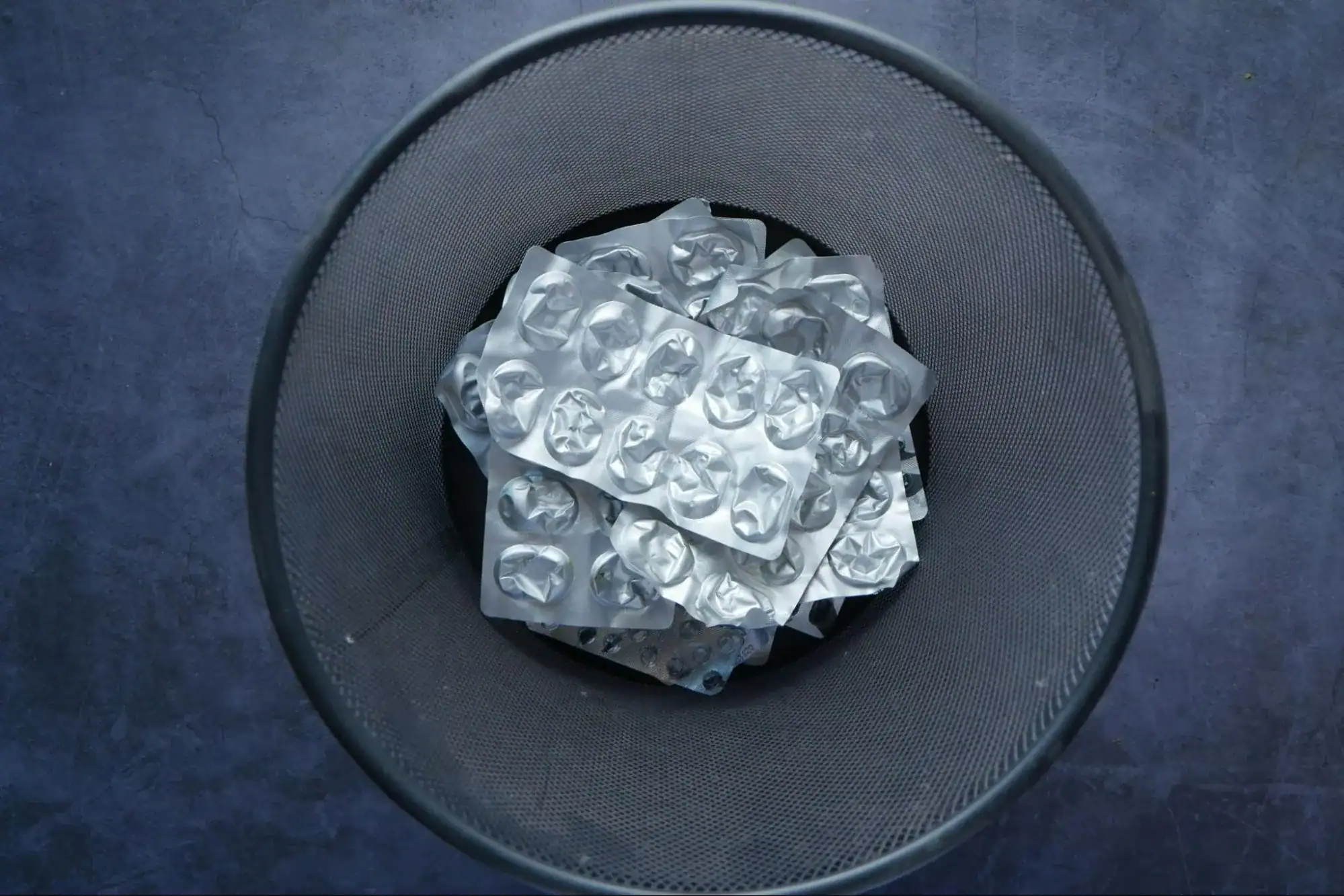
How you dispose of your old medication could contaminate soil. Safe practices can protect our ecosystems.
Source: Pexels.com
Antibiotic Resistance Development
Once antibiotics reach landfills or are applied to fields through biosolids, they soak into the ground, quietly reshaping the microbial system. This type of pollution can place selective stress on bacterial societies, only allowing the most resistant bacteria to survive the action of these medications.
Even sub-therapeutic concentrations, below levels sufficient to kill bacteria, can initiate the change, accelerating the spread of antibiotic resistance. Soil bacteria can pick up resistance genes within a matter of days, transferring them to other species via horizontal gene transfer using plasmids as their transport. This rapid speed makes it even worse, particularly in farming soils that have been treated with biosolids already containing antibiotics, where resistance genes can occur at high levels, according to ScienceDirect.
Resistant microbes can potentially contaminate the human diet, either through crops grown from contaminated fields or through contaminated groundwater resulting from antibiotic leaching.
Pharmaceutical Disposal Methods: A Critical Assessment
Disposing of old pills is of significance, not just for the protection of the environment but for the protection of our health as humans as well. Outdated practices like flushing it down the toilet or discarding it into the trash have huge impacts on our waterways, and harming our wildlife, and if they reach the wrong users, as said by KPCW News in Pharmaceutical Disposal Methods: A Critical Assessment.
Luckily, with the advancing of times, practices of disposal have evolved, and today’s optimal methods are geared towards safer, eco-friendly means. The FDA promotes take-back initiatives as the safest ways to dispose of old medicine. If take-back is impossible, some medicines can be placed with other unusable items like coffee grounds and put into a sealed bag for disposal. Note that not all pills are equal. Some medicines, especially opioids, require extra caution because of the abuse potential.
From a safety perspective, having old medication around your house is a risk, as noted by KPCW News. Medication can end up in the hands of the wrong people, inquisitive kids, and people with drug addictions, making them significant hazards.
The table below shows how disposing of old medicine affects the environment, along with each different method of disposal and its specific impact:
| Disposal Method | Environmental Impact | Safety Considerations | Accessibility |
|---|---|---|---|
| DEA Take-Back Programs | Minimal – High temperature incineration destroys compounds | Highest – Chain of custody maintained | Limited – Events twice yearly or at authorized collectors |
| Pharmacy Take-Back | Low – Professional handling ensures proper destruction | High – Secure collection bins prevent diversion | Moderate – Available at many pharmacies but geographical gaps exist |
| Household Trash (with proper preparation) | Moderate – Landfill leaching possible but slowed by proper preparation | Moderate – Risk of access if not properly prepared | High – Available to all households |
| Flushing | High – Direct entry into water systems | High – Immediate removal from household | High – Available to all households |
Beyond the Flush: Targeted Disposal by Medication Class
Using the same method of disposal for all types of drugs isn’t really effective, not only as a matter of safety but also as a key to keeping our environment safe. While some drugs are controlled, they have a higher chance of being misused if they fall into the wrong hands, but others can stick around in the environment for years, causing long-term harm. Some drugs come with the instructions to flush them, like fentanyl patches.
The FDA actually keeps a “flush list” of high-risk medications and drugs that should be flushed immediately if you have no other choice because the risk of accidental poisoning is larger than the risk of environmental damage. However, thanks to the growth of take-back programs, this list has been getting smaller.
Curious how JiffyJunk’s services work? See how junk removal services work.
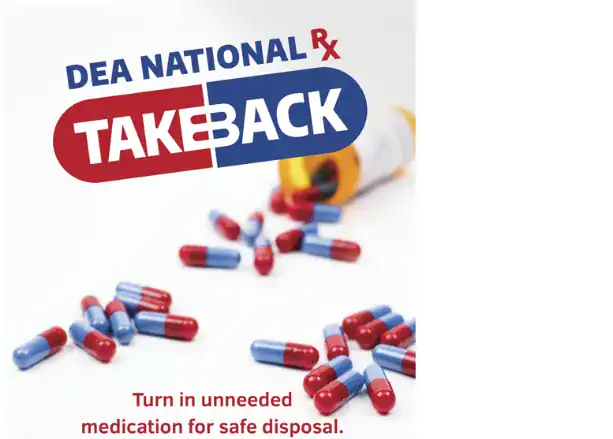
When you’re searching how to dispose of old pills, the DEA’s Take-Back Day is a safe method to look into.
Source: Pexels.com
Controlled Substances: The DEA Take-Back Protocol
When it comes to controlled substances like opioids, stimulants, and certain sedatives, proper disposal is more important than you think, and the best way to do it is through the DEA’s national Prescription Drug Take-Back events. They’re held twice a year, and they offer the most secure option by ensuring medications are incinerated at temperatures over 1800°F, completely destroying the active ingredients.
Between these two yearly events, the DEA’s online locator tool can help you find authorized collectors near you. If you’re dropping off medications, it’s best to keep them in their original containers with your personal info blacked out, but make sure the drug names are still visible so they can be handled correctly.
There are some authorized collectors, like certain pharmacies and hospitals registered with the DEA, that have a set list of strict chain-of-custody rules to make sure every step of the process is tracked and secure. Thanks to the Secure and Responsible Drug Disposal Act of 2010, it’s now easier than ever to safely dispose of medications outside of law enforcement offices. This just shows how important it is to safely dispose of old medications.
Cytotoxic Medications: Special Hazardous Waste Protocols
While most medications can be dropped off at the DEA’s Take-Back Day or authorized collectors, some types are more dangerous and need careful handling. For example, cytotoxic medications like chemotherapy drugs (such as vismodegib) or high-potency pain relievers (many considered controlled substances) aren’t just old pills; they’re also powerful compounds made just to destroy cancer cells, and they can do more damage than good if mishandled, as advised by MD Anderson Cancer Center. It’s necessary that you dispose of these properly.
Various water treatment methods could be used to remove pharmaceuticals from water. More advanced and costly methods still wouldn’t remove all traces of pharmaceuticals from drinking water sources. If you’re prescribed cytotoxic medications, your healthcare provider should supply you with special disposal containers, almost like the sharps containers used for needles. It’s critical never to flush these drugs or toss them in the regular trash. If you find yourself with leftover cancer medications and no instructions, the safest move is to reach out to your doctor, pharmacist, or local hazardous waste facility. Many oncology centers also have special protocols to take back these meds safely.
Cytotoxic drugs are actually classified as hazardous waste under the Resource Conservation and Recovery Act (RCRA) because of their potential to cause genetic damage. They need to be treated with the same level of care you’d expect for any hazardous chemical, because that’s exactly what they are.
The Chemistry of Home Disposal Methods
Programs like DEA Take Back events are the most popular for safe medication disposal, but unfortunately, they aren’t accessible year-round or available in every community. Rural counties have fewer take-back options. If that’s the case, it helps to understand the chemical process behind safely disposing of medication at home, because the smallest effort can make a big difference.
Home disposal of old pills isn’t just about getting rid of them; it’s about making sure that they are less harmful once they reach a landfill. The goal is to deactivate the active compounds and bind them to prevent them from reaching groundwater and physically block them from easily escaping into the environment.
For example, if you mix medications with something undesirable like used coffee grounds or even cat litter, then seal them into a sturdy container and throw them into the trash, it would slow the medication’s release and make it less likely to be misused to contaminate water resources or fall into the wrong hands.
Some types of medication break down easier than others, so this method works better for some drugs than others. Even though landfill systems capture a big percent of liquid runoff (called leachate), pharmaceutical compounds are tricky as they can still escape through the small percentage of uncaptured leachate or by volatilizing into the air.
Although we’re not associated with the DEA’s take-back program, we believe in eco-friendly trash disposal, which can help protect ecosystems, drinking water, and public health too.

Old pill disposal methods can be safely practiced at home if the take-back program isn’t an option.
Source: Pexels.com
Deactivation Through Chemical Alteration
In case it is not an option to use the take-back program to dispose of old medications, you can always make a difference by disposing of them safely in your home. Chemical deactivation is a great way to neutralize leftover drugs, thus making them less harmful on their way to the landfill.
The deactivation procedure really isn’t about burying non-controlled substances in this case. It is a matter of either breaking down or locking away the active ingredients so that they can’t do any harm. Here is a simple trick: Mix the medication in question with some household items that might dilute its potency. For example, coffee grounds are known not only to be mess-making but also to contain tannic acid, which binds with several medications, especially those containing amine groups; by doing that, you are rendering them virtually incapable of harm. Activated charcoal is another household ingredient you could use. In addition, you could use some kitty litter, especially one with bentonite clay, which can immobilize drug molecules and prevent them from getting into the environment.
Here’s a very important point: never add any water to the mix. Adding water can help the release of the medications to the landfill, which is not as effective as disposing of old medications without water at home. Instead, combine any old medications with something that binds them, seal it tightly in a strong bag or container, and toss it in the trash.
Things get cooler from the science perspective. What you mix it with tends to depend on the chemistry of the drug itself. Acidic binders, like coffee grounds, are just the solution for basic medications. Alkaline binders, like some types of cat litter, are better for acidic drugs.
The Sealed Container Strategy
Without take-back programs, safely disposing of old medications is essential to protect the environment. To block pharmaceutical pollutants from reaching landfills, mix medications with a deactivating material like used coffee grounds, activated charcoal, or bentonite clay in a sealed plastic bag. Place the bag in a sturdy, non-biodegradable container like an old detergent bottle. Seal it with duct tape before discarding it in the trash.
Proactive Strategies for Reducing Pharmaceutical Waste
Pharmaceutical stewardship proactively reduces medication waste across the lifecycle, potentially saving $5 billion annually in the U.S., though these figures need further verification according to the Pharmacists’ Activities to Reduce Medication Waste. U.S. households typically have 4 prescriptions on average partially used prescriptions and 8-12 over-the-counter products, contributing to waste, but this awaits specific confirmation in America’s Love Affair With Prescription Medication.
The DEA’s Take Back Day has collected over 19 million pounds of unused meds as of April 2025, showing the issue’s scale, according to the DEA Take Back Day. Electronic prescribing with right-sizing cuts quantities, maintains efficacy, and minimizes waste.
Household inventories reduce waste by 25-40%, and digital apps increase proper disposal by 35-50% Pharmacists as Environmental Stewards. Community events achieve 2-3 times higher participation than permanent sites, with education boosting disposal by 40-60% The Needs and Opportunities.
Community-Based Disposal Innovations
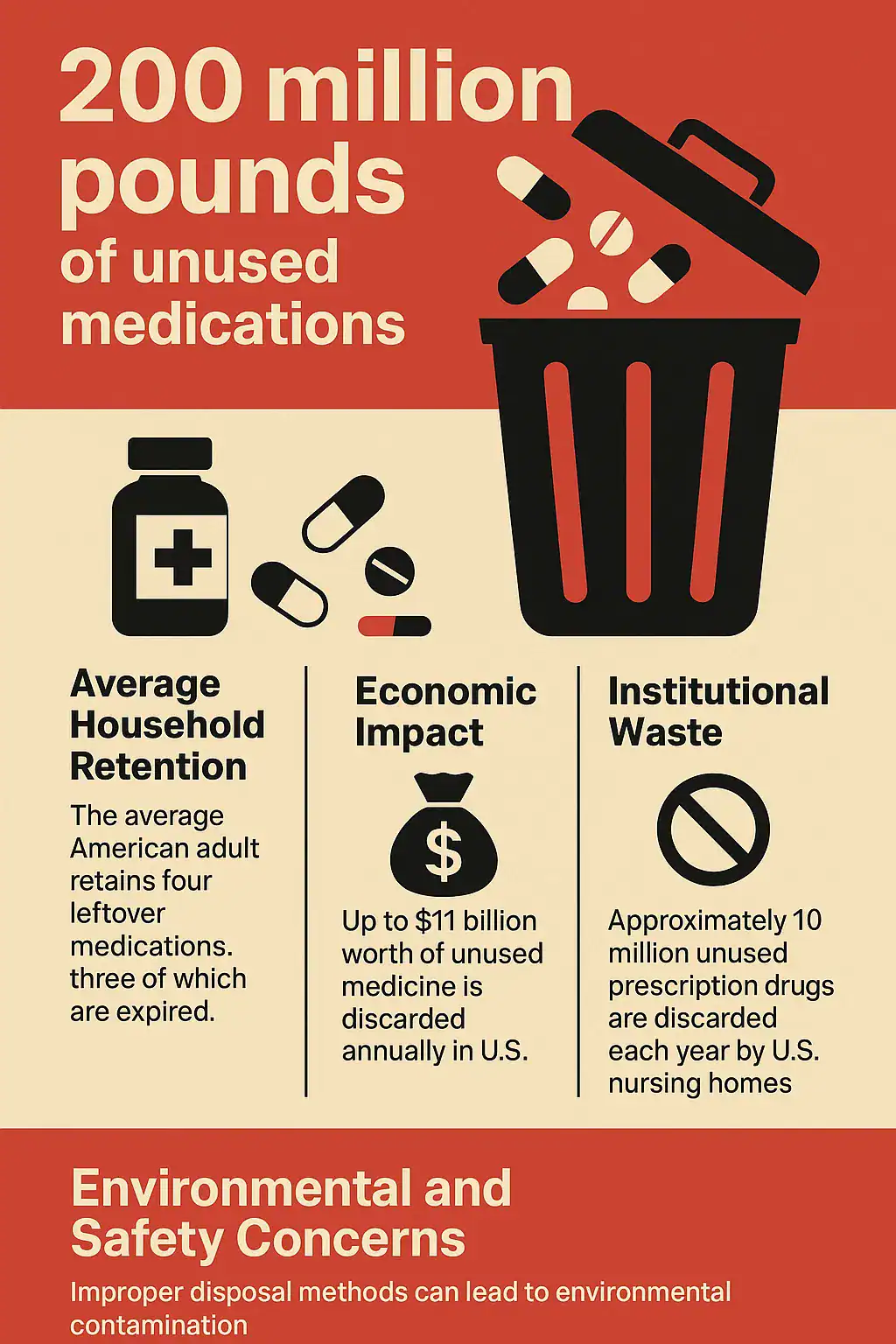
A brief on how pharmaceutical pollution affects our environment, encouraging proper disposal of old medicine.
Source: ChatGPT
Grassroots initiatives bridge gaps in formal disposal systems, using local trust to boost participation in medication disposal. Junk removal initiatives see 2-3 times higher turnout than permanent sites, while education increases long-term proper disposal by 40-60%. Peer-to-peer education is 70% more effective than institutional messaging. Like, local programs significantly cut pharmaceutical pollution through organisation and education.
The table below shows how each community-based initiative handles disposal of old medications. Introducing how faith-based collection events, neighborhood medicine drops, school-based education programs, and citizen science monitoring deal with the issue.
| Community-Based Initiative | Key Features | Implementation Requirements | Impact Metrics |
|---|---|---|---|
| Faith-Based Collection Events | Leverages trusted community spaces; Combines with existing gatherings | Partnership with pharmacy/law enforcement; Secure collection protocols | 250-400 lbs per event; Reaches demographics that underutilize permanent sites |
| Neighborhood Medicine Drop | Volunteer-run collection in community centers or libraries; Educational component | Training for volunteers; Coordination with disposal facilities | Increases proper disposal by 40-60% in target neighborhoods; Creates ongoing awareness |
| School-Based Education Programs | Educates students who influence household behavior; Provides take-home materials | Curriculum development; Teacher training | Increases household disposal rates by 30-45%; Creates intergenerational impact |
| Citizen Science Monitoring | Connects disposal to visible environmental outcomes; Builds community investment | Water testing equipment; Data management systems | Identifies contamination hotspots; Increases participation motivation by 50-70% |
Medication Disposal for Special Populations
Certain demographics face unique disposal challenges, like older adults or those with immobilities making them consume more medication. For example, my 78-year-old neighbor, limited by mobility, struggled post her husband’s passing; we used pharmacy mail-back envelopes for his meds and coffee grounds for non-controlled ones. When helping elderly relatives with medication disposal during estate cleanouts, consider mobility and plan disposal accordingly.
Advanced Environmental Considerations
Understanding the environmental fate of medications and considering persistence, bioaccumulation, and toxicity enables targeted disposal methods that minimize ecological impact by tailoring approaches to their specific risks across water, sediment, and soil.
Persistence Categories and Their Disposal Implications
Medications differ in environmental persistence, impacting disposal needs. Persistence half-lives range from hours to years: rapidly degradable (<7 days), or very persistent (>180 days). Transformation products can be riskier than parent compounds.
Highly Persistent Compounds: They are organic compounds that are resistant to degradation through chemical, biological, and photolytic processes, according to Wikipedia. They are toxic and adversely affect human health and the environment around the world, making landfill disposal risky; prioritize take-back with incineration.
Rapidly Degradable Meds: NSAIDs, penicillins, and beta-blockers (e.g., aspirin, 1-3 days; diclofenac, faster in sunlight) pose less risk and are suitable for contained household disposal if take-back isn’t available, according to the FDA’s flush list.
Transforming the Pharmaceutical Lifecycle
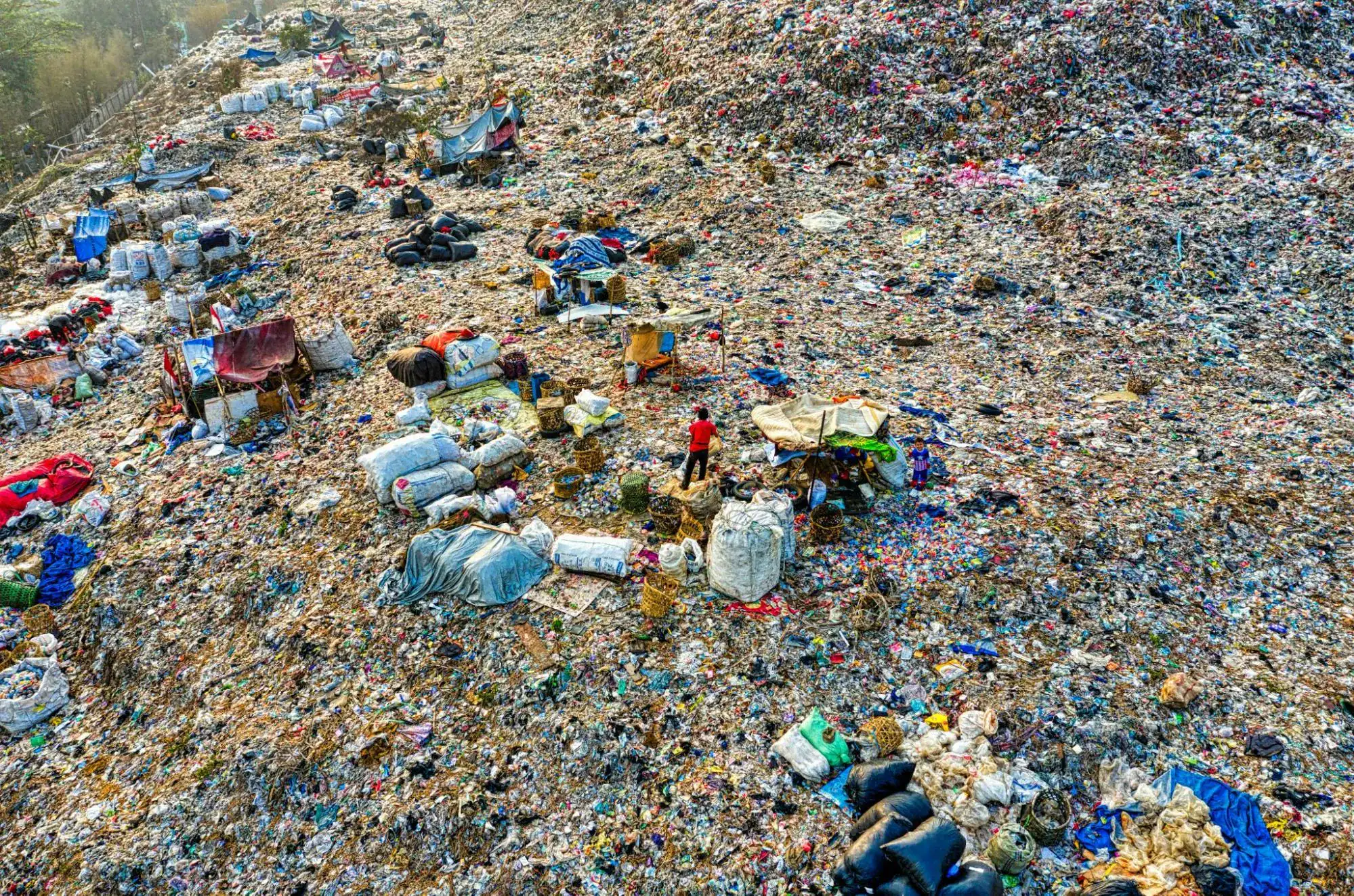
A lifecycle approach to pharmaceuticals, from design to disposal cuts waste, by minimizing environmental harm.
Source: Pexels.com
Effective pharmaceutical waste management should not end with disposal. It has to go hand in hand with actions taken along the entire medication life cycle. Waste prevention at the source, for instance, can achieve reductions in environmental loading and improvements in health outcomes; this also includes reducing unnecessary prescriptions. Overall life cycle analyses indicate that most environmental damage occurs from manufacturing and excretion rather than disposal.
Green Pharmacy Principles
A lifecycle approach tackles waste from design to disposal, trying to prevent pollution at the source.
Green Pharmacy: They design biodegradable meds with less excretion and lower waste, reducing ecological footprints while saving money in manufacturing.
Benign-by-Design: Creates meds that degrade harmlessly post-use, like redesigned beta-blockers, maintaining efficacy; ask providers for eco-friendly options.
Packaging Reduction: Some companies are developing packaging made from renewable, plant-based sources such as corn, sugarcane, and cellulose. Another innovation is the use of compostable films, which are ideal for blister packaging. These films are made from renewable resources like starches and cellulose and can be broken down in industrial composting facilities, according to 4Ocean.
Community Solutions
Grassroots initiatives boost disposal through trust, with events achieving higher participation than permanent sites. Education increases proper disposal, and peer-to-peer efforts improve behaviors. Like local programs that work towards cutting pharmaceutical pollution via grassroots efforts.
Consumer-Driven Transparency Initiatives & Insurance-Based Incentive Programs
Consumers can push for transparency in pharmaceutical environmental impact, like Europe’s public databases driving shifts to greener meds in hospitals and raising awareness. Support labelling initiatives and ask hospitals to prioritize eco-friendly formularies.
Meanwhile, some insurance programs tackle waste by covering trial prescriptions, removing quantity minimums, and funding mail-back programs. Addressing overprescribing; patients and employers should request these features.
From Knowledge to Action: Your Medication Disposal Guide
Take actionable steps tailored to your household, medication types, and location to reduce your meds’ environmental impact and ensure safe disposal. Specific guidance increases implementation, and starting small builds momentum for broader stewardship. Pharmaceutical stewardship cuts waste through a lifecycle approach; ask for trial prescriptions to reduce waste. The DEA’s Take Back Day has collected 19,200,440 pounds (9,600 tons) of unused meds, showing the issue’s scale. Grassroots efforts, with higher participation than permanent sites, and education, including peer-to-peer, help reduce pollution.
Household Pharmaceutical Stewardship Plan & Community Mobilization Strategies:
Household Plan: Create a medication management plan by inventorying all meds (15-25 per home, 20-30% expired), categorizing by type, noting expiration dates, and researching local disposal options. Post a reference sheet, schedule quarterly reviews, and use digital tools to boost proper disposal by 35-50%; pre-planning increases rates by 40-60%.
Community Mobilization: Amplify impact by mapping local disposal gaps and partnering with pharmacies, providers, and groups to start pilot programs like rural mail-backs or education campaigns. Community-led efforts see higher participation and often become permanent within a year with proven benefits.
How Jiffy Junk Can Help
At Jiffy Junk, we prioritize sustainability and eco-friendliness in our household junk removal services. We handle waste like medications and pharmaceutical waste responsibly by giving them away to take-back locations to ensure the safety of the environment and others.
At JiffyJunk, our services are highly eco-friendly and committed to protecting the environment. For that reason, we believe it’s crucial to properly dispose of old medicine to prevent accidental misuse or environmental contamination. While we don’t handle pill disposal directly, we encourage you to contact your nearest pharmacy if you need help immediately.
Need help with other waste challenges? Contact us easily by clicking the bell in the bottom left corner to connect with a representative instantly, or fill out a form for special requests or chat with us, and we’ll quickly respond.
Consumers can push for transparency in pharmaceutical environmental impact, like Europe’s public databases driving shifts to greener meds in hospitals and raising awareness. Support labelling initiatives and ask hospitals to prioritize eco-friendly formularies.
Meanwhile, some insurance programs tackle waste by covering trial prescriptions, removing quantity minimums, and funding mail-back programs. Addressing overprescribing; patients and employers should request these features.
Learnings Recap
Pharmaceutical waste creates tricky ecological challenges, harming aquatic life through bioaccumulation and soil environments by fostering antibiotic resistance, making knowing how to dispose of old medicine crucial. Different medications require specific methods; controlled substances should go to DEA take-back programs, cytotoxic drugs need hazardous waste handling, and others can use take-back options or safe home disposal. Access varies, with rural and urban capacity issues needing tailored solutions. Extended Producer Responsibility programs shift costs to manufacturers, building sustainable disposal systems, while proactive strategies like prescription right-sizing and inventory systems prevent waste. Community initiatives and citizen science bridge gaps in formal disposal options. Medications differ in persistence, some lingering for years, others breaking down fast, so green pharmacy principles aim to design eco-friendlier drugs, and policy innovations drive better stewardship.
Ready to tackle this pollution? Let Jiffy Junk help! Our eco-friendly junk removal, backed by over 15,000 trees planted during Climate Week 2024, ensures proper pill disposal. With our AI Phone Agent, booking is easy, and financing up to $25,000 with 0% APR makes it affordable. Get an instant video quote via our site’s bell, and opt for White Glove Treatment for a broom-clean finish. Schedule and explore our costs now!
More from Jiffy Junk
- More Sustainable Junk Removal: USA Recycling and Disposal Statistics
- 4 Months in Waste Disposal
- Storm Damage Repair and Restoration Services
- The Art of Old Gas Disposal: A Comprehensive Guide
Robust Service
Interested in Getting Started?
Have a big cleanout job that needs to be done right away? Contact us today.
We’ll get rid of your junk in a jiffy!
Fast & Reliable
What Our Customers Are Saying
Thousands of satisfied customers across America have shared their Jiffy Junk Experience.

